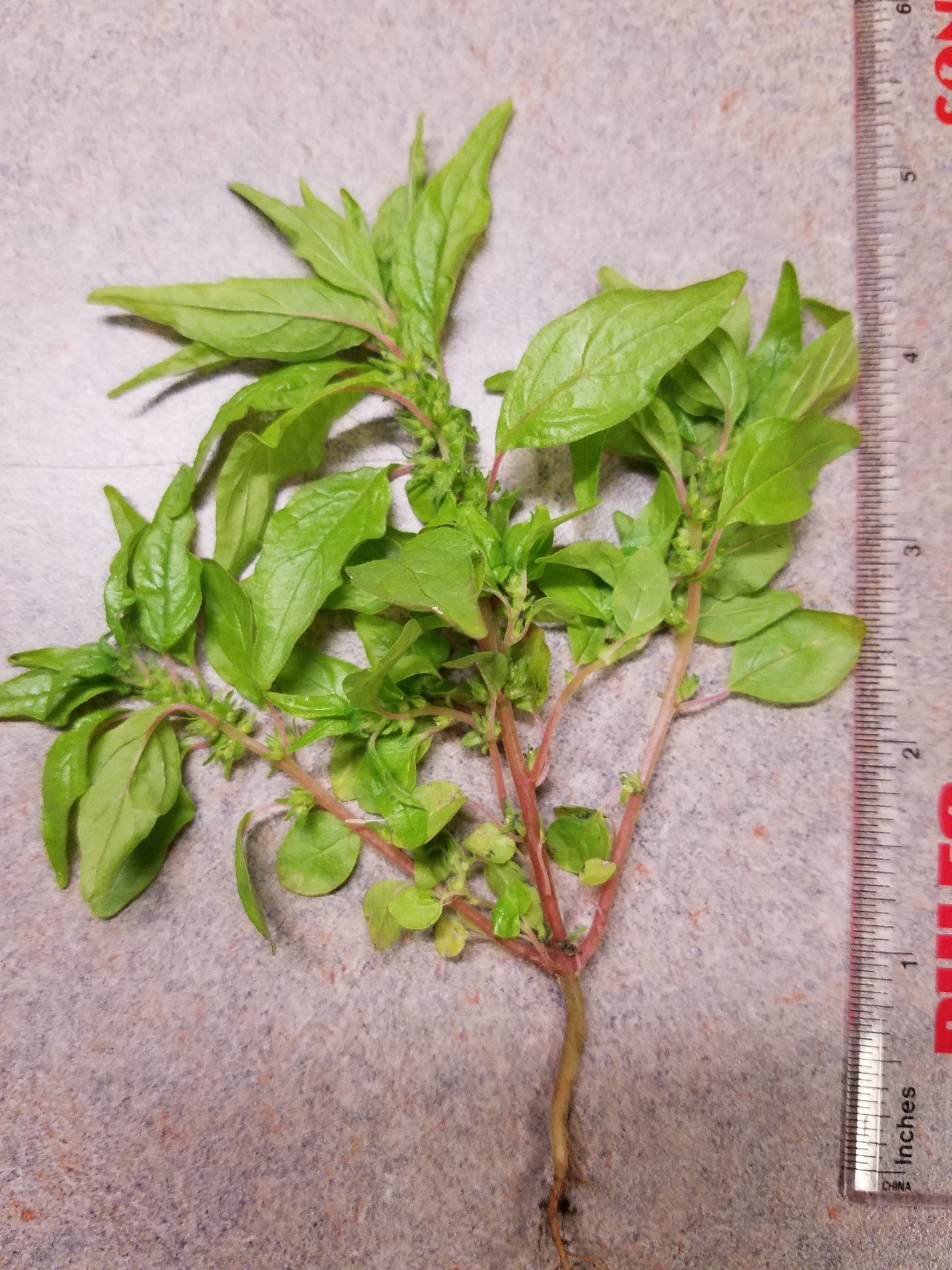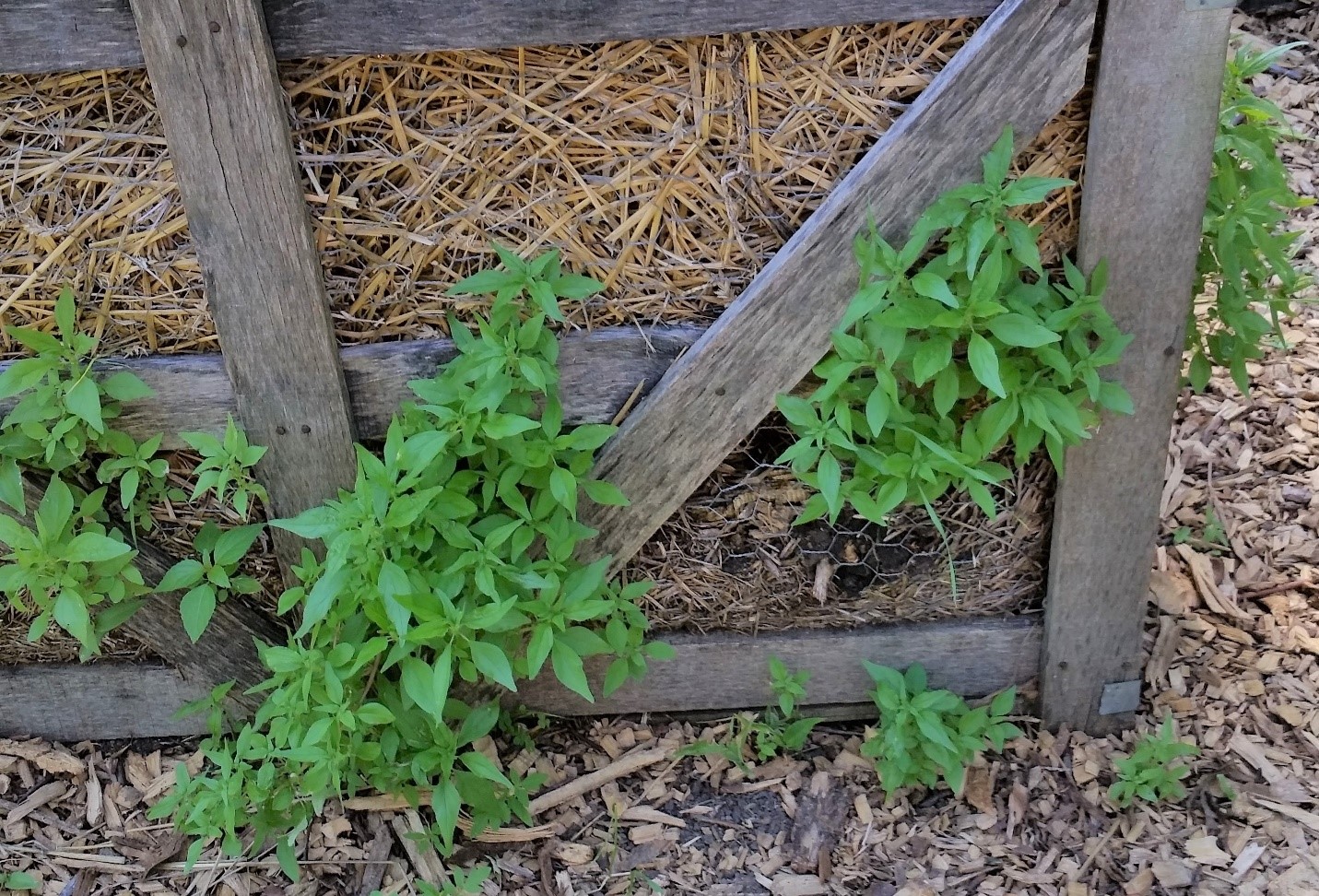Issue 6, July 1, 2021
Pellitory – A Newer Weed to Scout For
You’ve heard of purgatory. This is pellitory. It was nowhere and suddenly it is everywhere – including MY property, so now it’s personal. Perhaps you’ve noticed it too. In 2016, this largely unfamiliar weed was newly noticed to be growing rampantly all over campus in various landscape beds. Five short years later, it has made its way 15 miles south of town. I found it growing a few weeks ago for the first time all over a local, small town, community garden I assist with. Last week, I found a few plants growing deep within my windbreak. My guess is that birds have spread it there as this isn’t an easily accessible area and a bear to handweed so I trust my shoes didn’t spread the seed there. Regardless, if I’m seeing it in new places others likely are as well.

Pellitory up close. Richard Hentschel, University of Illinois.
Pellitory (Parietaria pensylvanica), or Pennsylvania Pellitory as it is also known, is typically thought of as being a woodland plant that forms colonies. Another name for this plant is Up Against the Wall Weed because it is known to grow in the cracks of walls. I’ve seen it growing happily out and up the sides of a straw bale garden. The hint of cucumber smell has resulted in some calling it Cucumber Weed. Some describe this weed as being sticky or adherent to the skin, thus the nickname “Sticky-weed”. There are a few species of Parietaria, however, which are similar in appearance.
Pellitory is in the nettle family, Urticaceae, but lacks stinging hairs (thank goodness). It grows 6 to 18 inches tall with a central, unbranched, 4-angled stem. Leaves are alternate and lanceolate. Both leaves and stems are pubescent. Flowers occur on the stem, are green with no petals, are seen in the summer, and last 2 to 3 months.

Pellitory growing in straw out the side of a raised bed. Michelle Wiesbrook, University of Illinois.
Pennsylvania Pellitory is native and prefers light shade but will tolerate full sun. It is found in both natural and disturbed sites. Reproduction is by seed, which can be rampant. Therefore, in a landscape bed situation, preventing seed production is important for control. This annual weed can be pulled or hoed out easily. Preemergent herbicides such as trifluralin could be effective on this weed. This species is not listed on the label, however its cousin Stinging Nettle (Urtica dioica) is. More research is needed for determining effective herbicides from controlling Pennsylvania Pellitory.
It is important of course to identify this weed early and to control it before it produces seed – which will provide more work for you in the coming years. Historically, this plant is not considered to be a commonly found weed in landscape settings. To my knowledge, many aren’t familiar with it. When it was first found on campus, INHS botanists were called upon to identify it. Only one of my typical go to weed ID reference books include this weed, Weeds of the Nebraska and the Great Plains, yet this plant can be found across the country. According to the Illinois Wildflowers website, it can be found widely across the state. Incidentally, there are currently two different species of pellitory becoming new, widespread problems in Florida.
For more information:
http://www.illinoiswildflowers.info/woodland/plants/pn_pellitory.htm
https://www.minnesotawildflowers.info/flower/pennsylvania-pellitory
https://plants.usda.gov/core/profile?symbol=pape5
Author:
Michelle Wiesbrook